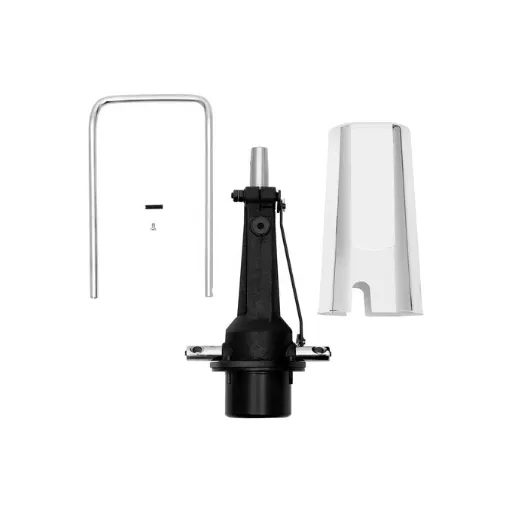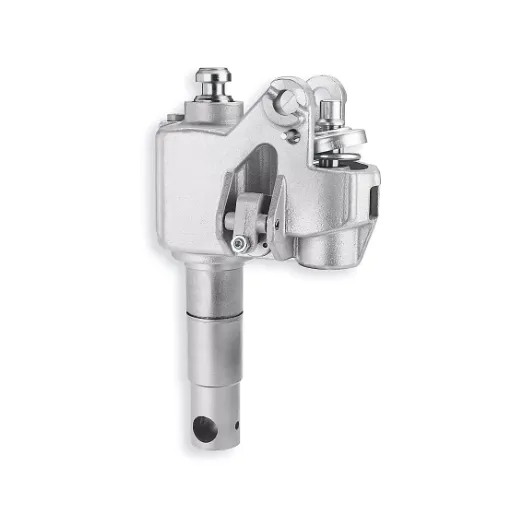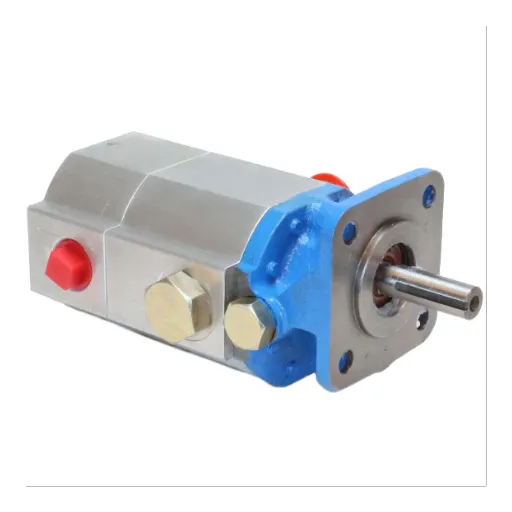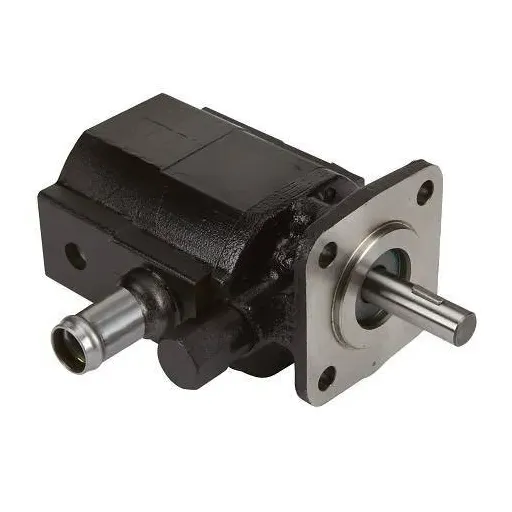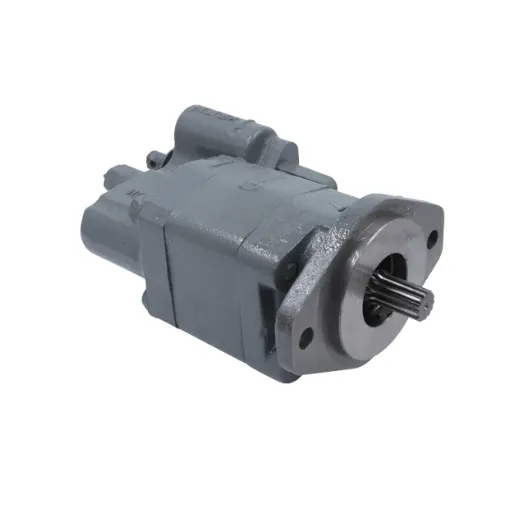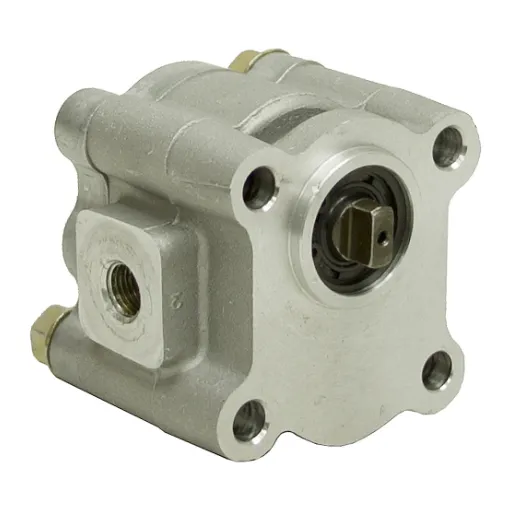Properly functioning equipment that is properly maintained leads to safe and satisfied clientele and thereby becomes an essential part of the salon business operations. One of the main factors that can affect the performance of the styling chairs is the hydraulic pump, which enables smooth height adjustments and ensures the same level of comfort for both stylist and client. On the other hand, when the hydraulic pump starts malfunctioning, it can interrupt your work flow and cause you to lose your temper. But do not worry, this guide is here to help you! If you are a salon owner, a stylist, or a person interested in repairing things by yourself, we will show you everything about the hydraulic pump repair kits—you will learn what they are, when you may need one, and how they can save you money and time. By the time you finish this article, you will be prepared to fix common chair problems and to bring your equipment back to its top performance.
Understanding the Hydraulic Pump
What is a Hydraulic Pump?
A hydraulic pump, in general, acts as a device that moves the hydraulic fluid and also pressurizes it in a system. Its principal function is to convert mechanical energy into hydraulic energy, and this hydraulic energy is then used to drive various tools, equipment, or machines. The fluid, which is usually oil or relatively less viscous liquid, is pushed through the pump and then goes to cylinders and hoses resulting in the pressure generation needed to carry out the tasks.
Hydraulic pumps are ubiquitous in the industrial and commercial sectors such as construction, automotive, and manufacturing, and they serve as a critical element in the functioning of salon chairs and other equipment. For salon chairs, the pump is responsible for the hydraulic system, which enables smooth and precise height adjustments of the chair. This serves as a great convenience and also increases the functionality of the chair for both the client and the barber or stylist.
The hydraulic pump’s efficiency is largely determined by how well it is maintained and looked after. Over time, different parts such as seals and cylinders could suffer from wear and tear or leak, thereby causing the pump’s performance to decline or to stop leading to failure. Hence, understanding the working principles of a hydraulic pump and being able to identify signs of wear can help save time and money by taking early action through repair or replacement.
How Hydraulic Pumps Function in Salon Chairs
Hydraulic pumps in salon chairs make use of the principles of fluid dynamics to facilitate easy and smooth adjustments of the chair’s height. The operation of these pumps is based on the use of hydraulic fluid, which is confined and administered under pressure in a closed system. The stylists apply or press the foot pedal which transfers the pressure onto the hydraulic fluid resulting in the movement of the cylinder within the pump and the consequent elevation of the chair. The pressure is then released allowing the chair to descend back to its original position.
One main benefit hydraulic pumps in salon chairs offer is precision. The pump enables minute height adjustments hence the chair can be placed accurately at the spot required for the stylist’s comfort and the client’s ease. This flexibility not only enhances the ergonomics but also leads to better efficiency of salon services. The hydraulic system provides stability that allows smooth operations without sudden movements, hence the overall experience is enhanced.
Maintenance is of utmost importance for the continued good performance of hydraulic pumps. Performing leak checks regularly, changing seals when they become worn, and keeping the system clean are some of the ways that the life of the pump can be significantly increased. It is important to be familiar with the working of these systems and to fix small problems quickly, so the salon chair can be considered a dependable implement in the daily routine.
Common Issues with Hydraulic Pumps
Hydraulic pumps can experience many problems, but the most frequent ones are leaking, low pressure, and strange noise during operation. Where seals are worn or have suffered damage, it is possible for leaks to happen and the hydraulic fluid to escape, thereby making the pump less efficient. One way to avoid this situation is to carry out regular seal inspections and replace them as needed. Low pressure could be due to the inflow of air into the system or the fluid level being too low which could hinder the pump from working at its best. Completing the hydraulic fluid level and purging air in the system are ways to deal with this issue.
Strange sounds like knocking and whining are the most common an issue with hydraulic pumps. Usually, these kinds of sounds are signs of problems such as cavitation, contamination or mechanical wear in the pump. Cavitation can happen when the liquid in the pump forms air bubbles, this can be treated by checking fluid levels and guaranteeing the right system operation. Contamination is often the result of dirt or particles in the fluid, and it can cause early wear and damage. Using contaminant-free, high-quality hydraulic fluid and replacing filters as part of regular maintenance will definitely reduce this issue. Responding quickly to abnormal noises also helps to prevent pump and related parts damage.
Apart from these, hydraulic pumps can also suffer from overheating, which is a problem that greatly reduces their efficiency and even leads to damage. Overheating could be a consequence of too much load on the system, lack of cooling, or hydraulic fluid becoming too thick. Taking the measures of providing adequate airflow, lessening the load if needed, and getting the fluid of the right viscosity for your operating conditions are some of the ways to cool down overheating problems. Therefore, regular maintenance and quick response to these issues not only increase the operating life of the hydraulic pumps but also keep the reliability and performance of the systems they service at the same level.
Essential Components of a Hydraulic Pump Repair Kit
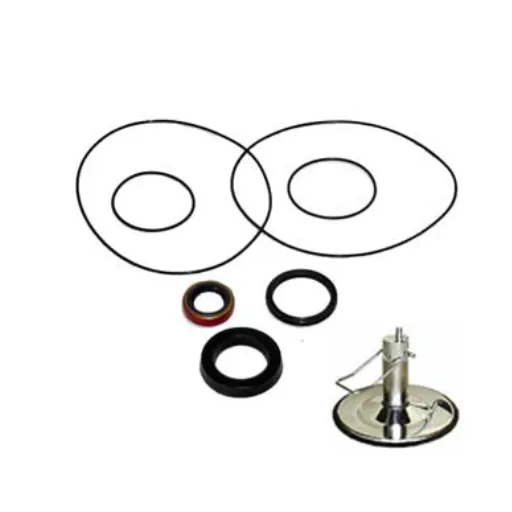
salon chair hydraulic pump repair kit
Key Parts Included in a Repair Kit
Usually, a hydraulic pump repair kit has different kinds of necessary parts which are meant to bring back the pump to life and also to stop the possibility of the issues coming back. The usual parts that the kit contains are:
- Seals and O-Rings – These are very important as they stop the leakage of fluid and help to keep the pressure in the system. They are available in different sizes and materials to fit the particular application.
- Gaskets – Gaskets are the materials that are used between the parts to ensure there is no hydraulic fluid leaking and gaskets are doing that by making it impossible for hydraulic fluid to escape during operation.
- Bearings – Bearings help to overcome the friction created between the parts and that is why they are very important for the pump to operate smoothly and very efficiently.
- Valves – Valves are the parts that determine the flow and the direction of the hydraulic fluid, hence proper system functioning is guaranteed.
- Pistons and Piston Rings – These parts work with piston-style pumps to keep the pump’s ability to compress and be efficient.
- Springs – Within the pump, springs are there to support the different mechanisms like controlling the movements of the valves or putting the components back to where they were.
- Washers and Fasteners – These tiny but highly important parts are the ones that make sure the assembly is tight and also lessen the number of vibrations caused by the pump.
- Suction and Pressure Plates – These plates work together to maintain the proper fluid flow through the pump with the same pressure.
- Filters – There is a need for clean hydraulic fluid in the system and filters are there to trap dirt and other foreign materials so that only clean hydraulic fluid circulates through the system.
Proper selection of a repair kit that matches your pump model is of utmost importance as it assures not only compatibility but also performance sustainability. Careful periodic inspection and worn-out parts replacement with those in repair kits can play a major role in the extension of hydraulic system life and efficiency.
The Role of Seals in Pump Longevity
Hydraulic pump seals are vital parts; without them, the system could be less efficient, non-reliable, and more prone to breakdowns. Seals keep the pressure steady, prevent the escape of the liquid, and bar the entrance of the contaminants, thus, allowing the pump to work without any interruptions for a long time. When seals are in place, they not only prevent excessive wear of the internal parts but also reduce the need for regular maintenance and elevating performance over all. To explain the five main functions of seals that add to the life of the pump:
- ✓ Preventing Leakage – Seals are able to hold hydraulic fluid in the system by forming a barrier which at the same time avoids the occurrence of leaks and loss of pressure.
- ✓ Maintaining Pressure – Through sealing of the hydraulic fluid within the pump, seals are able to help pump create and hold the pressure that is adequate and essential for the best possible pump operation.
- ✓ Excluding Contaminants – Seals prevent dust, the remains of dirt, the moisture from the outside entering the hydraulic system and thus, they do help to maintain the cleanliness of the fluid and reduce the chance of the sensitive components being damaged.
- ✓ Reducing Friction – Seals that are of the best quality are intended to make very little friction between the moving elements and hence, they are less likely to wear out and the pump’s life span is extended.
- ✓ Temperature Resistance – Seals derived from modern materials can take operating temps up to extremes which guarantees their efficiency even in the toughest of environments or the most mechanical demanding situations.
Users can appreciably increase the life span of their hydraulic pumps and avoid sudden system failure by making it a priority to regularly check and carry out maintenance on seals and whenever necessary, replace them.
Replacement Parts Overview
The use of high-quality parts for hydraulic pumps ensures their optimal performance. The selection of components with adherence to or exceeding original specifications can among other things, enhance the dependability and efficiency of the system a lot. Some of the replacement parts that are mainly for hydraulic pumps are as follows:
- Seals and O-Rings – They are the most important components that help fluid leakage prevention, thus facilitating proper pressure retention as well as efficient operation. Modern seals are being created with the use of composite materials to resist wear, temperature extremes, and chemical exposure.
- Hydraulic Filters – The filters take away the dirt and other impurities from the hydraulic fluid thus safeguarding the important components and also eliminating the possibility of premature wear. The continuous replacement of filters keeps the fluid clean, which in turn lowers the probability of system failure.
- Pump Cartridges – The internal cartridge assembly is the one that makes the hydraulic fluid moveability. The cartridges of high-quality will make flow rates and pressure uniform and thus save energy loss.
- Bearings and Bushings – These components hold the moving ones and help in the reduction of friction. Also, they provide smoothness in the operation. The high-quality and precisely made bearings and bushings will make that pump last longer.
- Valves and Regulators – The control valves and pressure regulators make sure that the operating conditions are always the same by controlling the flow of the fluid and altering the pressure as required. The use of trustworthy replacements guarantees the stability and security of the system.
The operators can relatively easy over the long haul and cost effectively improve the durability and efficiency of hydraulic systems by the methods of proper selection of replacement parts and the adherence to a strong maintenance routine cutting down unplanned downtime and operational costs.
Steps for Repairing Your Salon Chair Hydraulic Pump
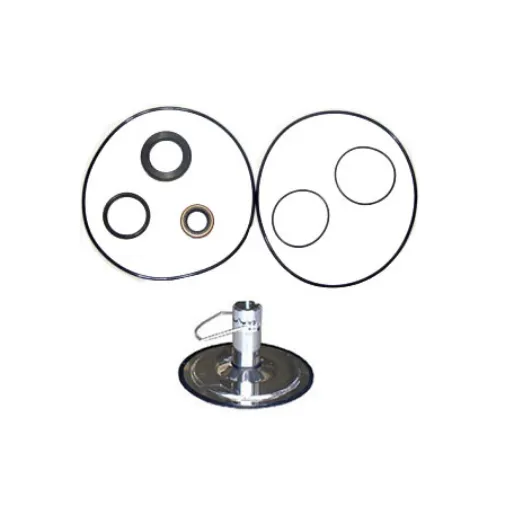
salon chair hydraulic pump repair kit
Gathering Necessary Tools and Supplies
Prior to fixing your hydraulic salon chair, it is very important to have all the right tools and supplies ready in advance. A basic toolset must consist of adjustable wrenches, pliers, screwdrivers, and Allen keys. Also, lubricants, hydraulic oil that is suitable for the pump, and possible new seals or O-rings should be collected. Besides that, a soft cloth or rags will be needed for cleaning, and containers will be necessary to collect any spilled hydraulic fluid during the process of disassembly. Having these tools at hand will not only make the repair process smoother but also reduce the number of disruptions.
For the sake of safety, you might want to consider wearing personal protective gear, like gloves and safety glasses, especially when working with hydraulic fluid, which is a skin and eye irritant. A bright and clean working area is also very important to keep accidental dropping of tools or parts from happening. Furthermore, having technical documentation, like the user manual of the chair or repair guides from the manufacturer, is very helpful as they frequently contain diagrams, specifications for parts, torque requirements, and assembly instructions.
Inspect and sort your tools before starting the repair process. The use of defective or incorrect tools can be a reason for complications or even pump damage. In case you have already detected the replacement parts that will be needed during the repairs, you should buy the top-quality components from well-known suppliers to guarantee that they will be compatible with your hydraulic pump. Good preparation will be the reason for your salon chair’s hydraulic system being more efficient and successful in restoring its beauty.
Step-by-Step Repair Process
- 1
Check the Pump for Any Signs of Damage
First of all, pay attention to the hydraulic pump and look for any external signs of damage, leakage, or cracks. Check the areas around the seals for oil residue since it could signify the necessity of replacement or repair. - 2
Let the Hydraulic Pressure Off
Make sure that the built-up hydraulic pressure in the system is released before you begin. To do that, gradually bring down the beauty salon chair to its lowest position. This step decreases the chance of accidents happening while the device is being taken apart. - 3
Take the Pump Apart
External housings or casings around the hydraulic system should be removed first. Differentiate and keep screws and small components organized to avoid losing them. After opening up, carefully take apart the pump components according to the manufacturer’s diagram for easy reassembly. - 4
Wash and Change Seals
Get a lint-free cloth and use it to clean the pump components by removing dirt, grime, or old hydraulic fluid. Check all seals for cracks or deformation. Replace any damaged seals with new ones that correspond with the manufacturer’s specifications to prevent leaks of the future fluid. - 5
Look at the Internal Mechanisms
Now that the pump is taken apart, check its internal mechanisms for wear or damage. The control valve and piston are the parts where failures usually happen, so especially pay attention to them. Also, make sure that each part moves freely and without any resistance. - 6
Put the Pump Together Again
After carrying out all the cleaning and inspections, reassemble the pump in reverse order of disassembly. Make sure that all the components are correctly aligned and tightly secured. To avoid overtightening, use manufacturer-recommended torque settings. - 7
Fill up and Bleed the Hydraulic Fluid
The hydraulic system should be filled with fluid that is fresh, clean, and of the recommended type and viscosity. The system should be bled to get rid of air bubbles by pumping the chair up and down until the motion is smooth. - 8
Try Out the Fixed System
Once the assembly and fluid change has been done, check the hydraulic operation of the salon chair. Look for smooth and even movement and keep an eye on the system for leaks. If necessary, make the adjustments again to ensure the performance is at its best.
Restoring the functionality of your salon chair, therefore, becomes possible by observing these procedures and obtaining dependable parts which will guarantee its efficient and safe operation for future use.
Tips for Effective Repair and Maintenance
- Use Quality Replacement Parts: It is a good practice to always buy top-quality parts that are replacements and equal to the specifications of the original manufacturer. If you use such low-quality parts, it might lead to adverse effects on the performance and lifespan of your machinery.
- Keep a Regular Maintenance Schedule: Scheduled maintenance regularly helps to spot possible problems early which are then easy to fix and inexpensive. Prepare a checklist that consists of various activities like cleaning, lubrication, and inspection of critical components which include hydraulic cylinders and seals.
- Follow Manufacturer Guidelines: Use the user guide for detailed repair and maintenance instructions. Sticking to the manufacturer’s recommendations will not only keep your warranty but also extend the life of your equipment.
- Monitor Fluid Levels and Quality: Hydraulic fluid levels should be checked mainly and at the first sign of discoloration or contamination, fluid should be replaced. One of the drawbacks of dirty hydraulic fluid is that it can lead to inefficiency and damage over time.
- Inspect for Wear and Tear: Examine mechanical parts regularly for wear, rust, or damages signs. If parts like springs and fasteners seem to be compromised, then they must be replaced to avoid larger system failures.
- Invest in Proper Tools: Use the right tools for repairs to guarantee accuracy and at the same time, prevent further damaging the components. Hydraulic systems might require specialty tools for maintenance to ensure it is done safely and effectively.
- Keep the Work Environment Clean: Repairs should be done in a clean, well-organized area to reduce the possibility of contamination of delicate parts such as hydraulic cylinders and fluid reservoirs.
- Train Staff on Basic Maintenance: When you give basic repair and upkeep training to your team members, it will not only increase the lifespan of your equipment but will also result in less downtime. Proper use and handling prevent unnecessary damage.
If you adopt these recommendations as part of a comprehensive maintenance strategy, you will be able to maintain the reliability and efficiency of your salon chair and other hydraulic products for many years to come.
Choosing the Right Hydraulic Pump Repair Kit
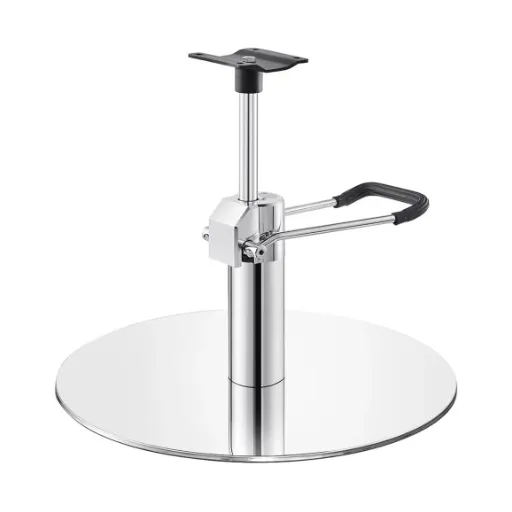
Factors to Consider When Selecting a Kit
Compatibility
Make sure that the repair kit is meant for your particular hydraulic pump model. Verify the manufacturer’s specifications and compare the part numbers carefully so as not to buy a kit that is not suitable.
Quality of Components
Repair kits with good quality and durable components are the ones to choose. Using reinforced seals, heavy-duty O-rings, and wear-resistant parts in the kit helps not only to repair the hydraulic pump longer but also to perform better.
Comprehensive Contents
The repair kit that contains all the needed parts such as seals, gaskets and others for replacement, is the one to select as it will solve the potential issues comprehensively. Going for the complete kit turns out to be a wise move as it allows you to avoid making additional purchases or facing delays during repairs.
Ease of Use
Go for a repair kit that has clear instructions or guides for installation. User-friendly kits help to save time and reduce the risk of incorrect reassembly, thus securing optimal results.
Cost and Value
Assess the price of repair kits in relation to the quality and components included. Although economical options might be attractive, it is better to spend on a strong and well-reviewed kit which can save you from experiencing frequent repairs in the future.
Customer Reviews and Feedback
Look into customer experiences and reviews to get understanding of the kit’s reliability and performance. Recommendations from satisfied customers who have used similar equipment can be very helpful in making your decision.
Considering these aspects will lead you to a hydraulic pump repair kit that not only matches your machine but also improves its productivity and lifespan.
Heavy Duty vs. Standard Kits
Heavy-duty kits come with the advantages of greater load capacity, longer life, and higher stiffness, whereas standard kits are characterized by better ride comfort and lower price.
| Key Point | Heavy Duty | Standard |
|---|---|---|
| Load | High capacity | Moderate capacity |
| Durability | Long-lasting | Standard lifespan |
| Stiffness | High stiffness | Low stiffness |
| Comfort | Reduced | Enhanced |
| Cost | Higher | Lower |
| Usage | Heavy loads | Regular loads |
| Handling | Less agile | More agile |
| Applications | Industrial/Work | Everyday use |
Regular Maintenance for Hydraulic Salon Chairs
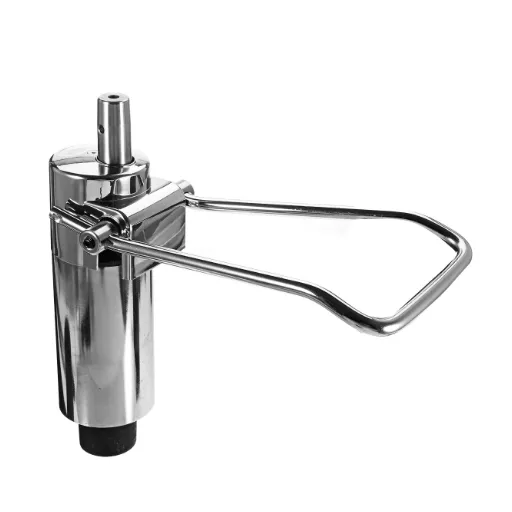
Importance of Regular Maintenance
Hydraulic salon chairs require regular maintenance to assure their performance as well as longevity. In my case, maintenance helped me to avoid sudden malfunctions that could cause disturbances to daily operations and, in the end, lead to costly repairs. You can make the adjustments seamlessly and ensure the clients’ maximum comfort if you keep the hydraulic system up. The professional salon experience created will be one that is both comfortable and delightful.
Cleaning and inspecting the chairs are often scheduled activities that I have incorporated into my routine. Annually checking, for example, whether there are oil leaks, bolts need tightening, and cleaning the upholstery not only makes the chair more functional but also adds to the beauty of your salon which is very important in keeping your environment clean and inviting. The overall mobility of chair parts can be greatly improved with regular proper lubrication thus increasing the lifespan of the chair.
Neglecting the regular maintenance schedule can result in poor operational performance which translates into extra costs eventually. If I may say so, a chair that is properly maintained gives off a professional look and it is an aspect of the salon that will not go unnoticed by clients. By using these tools that are so necessary for the salon’s performance, the salon also gets to enjoy the benefits of increased reliability, safety, and its overall reputation.
How to Maintain Your Chair’s Hydraulic Pump
For smooth operation and long life of your chair hydraulic pump, proper maintenance is a must. First and foremost, checking the pump regularly for any leaks or damages is a good practice. In case you see hydraulic fluid coming out, tightening loose fittings or replacing damaged seals quickly would be the right move. Cleaning the pump area is also very important to remove hair, dust, or other debris which may hinder its performance.
In order for the pump to be at its best, make it a point to check and refill the hydraulic fluid from time to time. Be sure to use the liquid the manufacturer recommends, as using the wrong one can ruin the mechanism. Furthermore, do not exceed the weight limit of the chair, as doing so will cause strain on the hydraulic system and result in early wear.
Keep on lubricating the parts that are in motion so as not to be caught unaware by stiffness and that smooth height adjustments will be the case. In the event that the chair starts sinking or feels unsteady, it could be a sign of air or a problem in the pump, and professional help might be needed. Adhering to these measures will not only keep the hydraulic pump of your chair dependable but also prolong its period of use and prevent costly repairs.
Signs Your Salon Chair Needs Repair
Salon chairs are a critical component of every salon’s daily activities, and recognizing the signs of aging early can prevent any interruptions in your service. One of the most noticeable signs that a salon chair is in need of repair is its constant sinking or the height adjustments that do not get locked. The problem usually reveals a dying hydraulic pump or leaks in the system. If the situation is not dealt with quickly, it is likely to create problems with ergonomics for the stylists and discomfort for the clients, which will eventually reflect in your business’s reputation.
Another thing you need to look for is the making of strange creaking or squeaking noises whenever the chair turns or moves. These noises could be a sign of lack of tightness in the parts, lack of lubrication on the moving parts, or wear in the internal mechanisms. If such problems are not solved they will eventually turn into very serious mechanical breakdowns. Base hardware should be inspected and maintained regularly as this area often gets a lot of strain, particularly in daily use.
Last but not least, any visible damage such as thinning of the upholstery, cracks in the armrests or wobbly bases should be interpreted as a signal to repair the furniture. At first glance these may appear to be merely aesthetic issues, but in fact they can compromise not only the safety but also the functionality of the chair. As an example, upholstery that is frayed or has been torn can create difficulties in cleaning whereas a base that is shaky might be a safety hazard for both clients and stylists. Taking care of such problems quickly not only assures the performance of the chair but also keeps a salon’s professional appearance. Good maintenance and prompt repairs are a way to extend the life of your salon’s chairs, as well as to keep your working area safe and inviting.
Frequently Asked Questions (FAQ)
Q: What is a salon chair hydraulic pump repair kit?
A: A salon chair hydraulic pump repair kit is an assortment of pieces meant to repair the hydraulic pump-related problems of salon chairs, barber chairs, and shampoo chairs. It usually contains parts such as seals, hoses, and other necessary tools to bring back the chair’s full functionality.
Q: How do I know if my salon chair’s hydraulic base is faulty?
A: A hydraulic base’s faultiness is marked by height adjustment problems, a decrepit foot pedal, or the chair acting whimsically. Oil seepage along with hose cracks is another instance when a repair kit should be contemplated.
Q: What does the repair procedure involve for a hydraulic pump?
A: The hydraulic pump repair procedure is about chair disassembly first, then base inspection of damaged parts, replacing the pump shaft or seals, and finally reassembling the chair. If you’re careful with maintenance, you won’t have to deal with heavy repairs later on.
Q: Can I use a salon chair hydraulic pump repair kit on a shampoo chair?
A: Shampoo chairs can indeed be treated to a salon chair hydraulic pump repair kit if their components are compatible. The sharing of hydraulic systems among many chairs makes the kit adaptable to the needs of different salon equipment.
Q: What are the common causes of hydraulic pump failure?
A: The main reasons for hydraulic pump failure are lack of proper maintenance, misuse, and natural wear. Regular inspections can always spot problems like oil seepage or rubber hose decay before they turn into pump breakdowns.
Q: How can I maintain my salon chair’s hydraulic base for longevity?
A: Performing leak checks on the hydraulic base, chair cleaning, and smooth operation are the maintenance activities for the hydraulic base of your salon chair. Pump lubrication and foot pedal inspection will help prolong the life of your chair as well.
Q: Is it necessary to replace the entire hydraulic pump if there is an issue?
A: Not really. More often than not, salon chair hydraulic pump repair kit takes care of the problems, allowing you to replace just the broken parts instead of the whole pump, hence, a saving of time and money.
Q: How do I adjust the height of my salon chair after a repair?
A: After repairs have been done with the help of a hydraulic pump repair kit, you can adjust your salon chair height simply by the use of the foot pedal to either raise or lower the chair to your preferred height. Make sure the pump is in good condition so the adjustment process will be smooth.
Q: Where can I find a product description of a salon chair hydraulic pump repair kit?
A: Salon chair hydraulic pump repair kit product descriptions are generally available on the manufacturer’s website, online stores, or inside the kit box. Such descriptions usually explain which parts are included along with their compatibility with different salon equipment.
Q: Can I attempt a repair myself, or should I hire a professional?
A: It is your comfort-level with tools and mechanical work that will determine the answer. A hydraulic pump repair kit comes very handy for repairs, thus many salon proprietors resort to such DIY repairs, but if you feel insecure or the repair looks complicated then a professional can do it right and also take care of maintenance.
Ready to Restore Your Salon Chairs?
With this comprehensive guide, you now have all the knowledge and tools needed to successfully repair and maintain your salon chair hydraulic pumps, ensuring smooth operation and client satisfaction for years to come.



